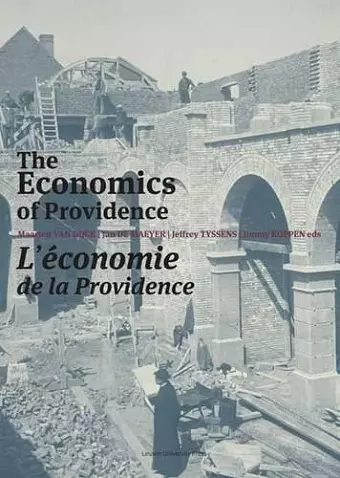The Economics of Providence
Management, Finances and Patrimony of Religious Orders and Congregations in Europe, 1773–ca. 1930
Jan De Maeyer editor Maarten Van Dijck editor Jeffrey Tyssens editor Jimmy Koppen editor
Format:Paperback
Publisher:Leuven University Press
Published:16th Jan '13
Currently unavailable, our supplier has not provided us a restock date

The wealth and patrimony of religious institutes
During the French Revolution almost all monasteries and abbeys were suppressed and their possessions seized. Yet after the French Revolution many religious institutes were very successful in re-establishing themselves, sometimes accumulating large patrimonies, against the background of often hostile political forces.
This book deals with the question of how the religious orders and congregations rebuilt their patrimony, a necessary prerequisite for the growth of the number of religious, educational and charitable services.
The authors discuss the (real or supposed) wealth, the financial structures, and the management and juridical foundations of the orders and congregations in Italy, Spain, Portugal, France, Luxembourg, Belgium, Ireland, and the United Kingdom from the late eighteenth century to the 1930s.
This publication is GPRC-labeled (Guaranteed Peer-Reviewed Content).
Contributors
B. Bodinier (Université de Rouen), M. de Fátima Brandão (Universidade do Porto), M. Casta (Université de Picardie Jules Verne), J. De Maeyer (kadoc - University of Leuven), X. Dusausoit (Centre Scolaire du Sacré-Coeur de Jette), J. Frith (capa International Education, London), G. Gregorini (Università Cattolica del Sacro Cuore, Brescia), J. Koppen (VSAD Karel Cuypers), M. Luddy (University of Warwick), C. Mangion (Birkbeck, University of London), J. Oliveira (Universidade do Porto), P.M. Perluss (Université Pierre Mendes France Grenoble), R. L. Philippart (ucl et Directeur de l'Office National du Tourisme du Grand-Duché de Luxembourg), G. Rocca (Dizionario Degli Istituti di Perfezione), B. Truchet (Professeur retraitée), J. Tyssens (VUB), M. Van Dijck (Flanders Heritage and UHasselt) and Fco. J. Fernández Roca (Pablo de Olavide University de Sevilla).
De grande qualité et soigneusement édité, l'ouvrage sous recension porte à la connaissance du public le produit de recherches récentes et novatrices. II est de nature à susciter de nouvelles investigations du même type. C'est pourquoi il mérite de retenir l'attention des spécialistes de l'histoire religieuse, mais aussi celle de chercheurs intéressés par la gestion patrimoniale.
Paul WYNANTS, Revue Belge de Philologie et d'Histoire 2013/4
The individual essays testify to the specific expertise of their authors (who provide very useful and rich bibliographies at the end of each chapter), and they achieve what is often lacking from an edited collection: a sense of unity. Taken as a whole, they paint a detailed picture of religious Orders and Congregations which, phoenix-like, managed to rebuild themselves from the ashes of their near destruction; these stories of economic and social success are all the more edifying since they emerge from a context of heightened state anticlericalism and legal impediments.
Laurence Lux-Sterritt, Aix-Marseille Université, Recusant History 32, 1 (May 2014)
In veel landen verloren kloosterordes en congregaties tijdens de late achttiende en vroege negentiende eeuw al hun bezittingen, al dan niet als gevolg van Verlichting en Franse Revolutie. Deze bundel vraagt zich af hoe kerkelijke instellingen zich van die aderlating herstelden en betreedt daarmee een belangwekkend, maar weinig gekend terrein, namelijk de economische geschiedenis van ordes en congregaties. Van Dijck en De Maeyer leiden de problematiek in, waarna veertien auteurs bijdragen leveren over liefst acht Europese landen.
BMGN - LCHR, Vol 128 (2013)
ISBN: 9789058679154
Dimensions: unknown
Weight: 907g
376 pages